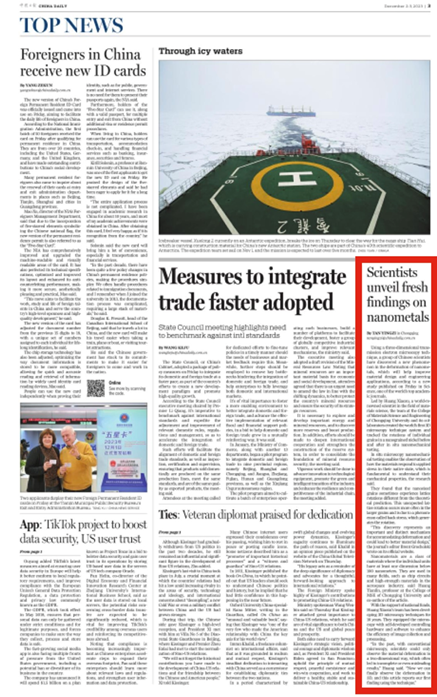Using a three-dimensional transmission electron microscopy technique, a group of Chinese scientists have discovered a new phenomenon in the deformation of nanometals, which will help improve material design and engineering applications, according to a new study published on Friday in Science, one of the world's top academic journals.

Led by Huang Xiaoxu, a world-renowned scientist in the field of materials science, the team at the College of Materials Science and Engineering of Chongqing University and its collaborators created the world's first 3D microscopy technique system and tracked the rotations of individual grains in a nanograined nickel before and after in situ nanomechanical testing.
In situ microscopy nanomechanical testing enables the observation of how the materials respond to applied stress in their native state, which is fundamental to understand their mechanical properties, the research said.
They found that the nanosized grains sometimes experience lattice rotations different from the theoretical prediction. This unexpected lattice rotation occurs more often in the larger grains and is due to a phenomenon called back stress, which generates the rotation.
"This discovery represents an important and distinct mechanism for accommodating deformation and could lead to better material design," the journal's editor Brent Grocholski wrote on its official website.
Nanomaterials are a class of materials where the individual units have at least one dimension below 100 nanometers. They are used in many fields, such as chip circuits and high-strength materials in the aerospace industry, said Huang Tianlin, professor at the College of MSE of Chongqing University and co-author of the article.
With the support of national funds, Huang Xiaoxu's team has been developing 3D microscopy techniques for 10 years. They equipped the microscopy with self-developed controlling hardware and software to enhance the efficiency of image collection and processing.
"In the past, with conventional microscopy, scientists could only observe the material deformation in a two-dimensional way, which often led to incomplete or even misleading results," Huang said. "Now we can finally observe the deformation in 3D, and this article reports our first finding using the technique."
Link to this article: https://www.chinadaily.com.cn/a/202312/02/WS656a659aa31090682a5f109d.html